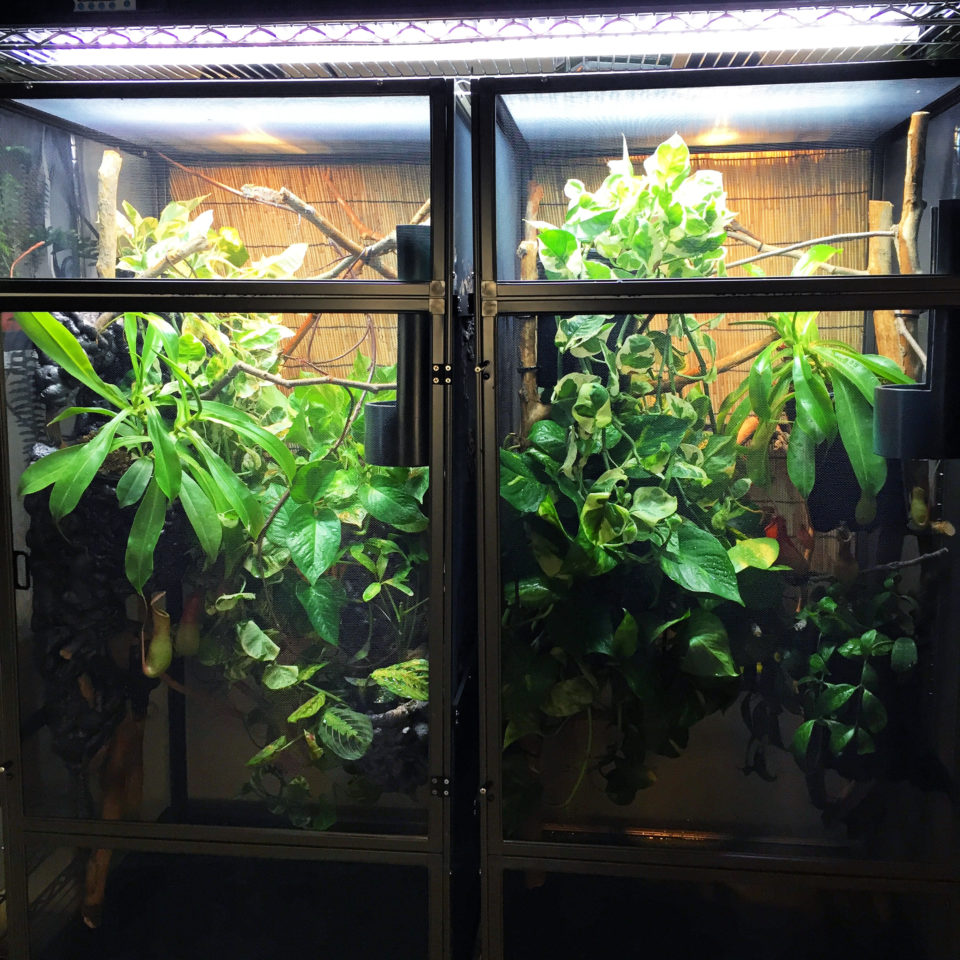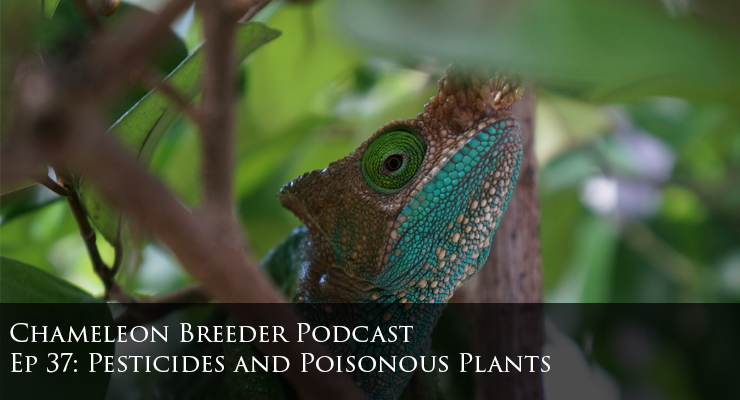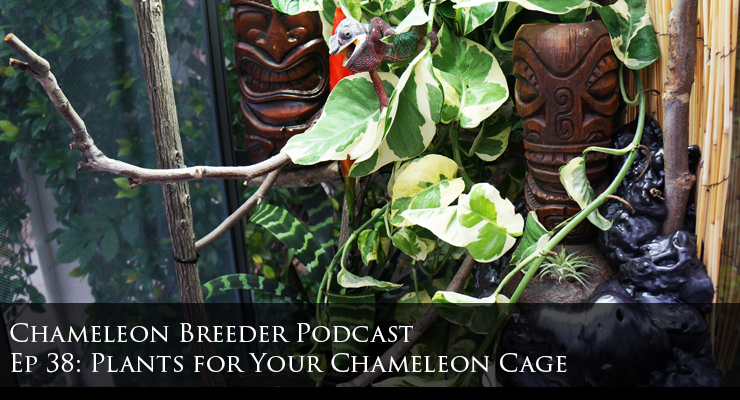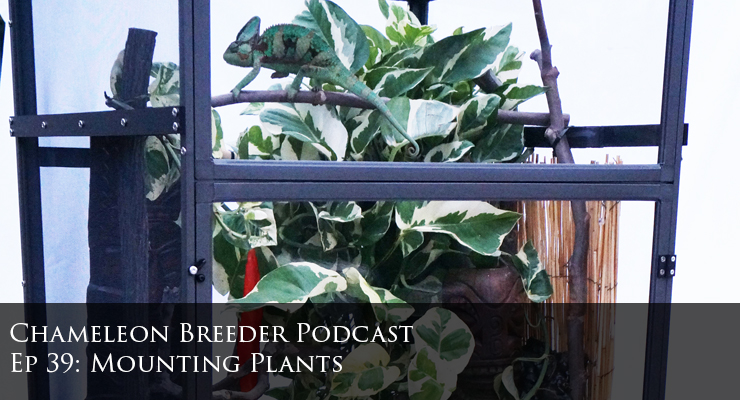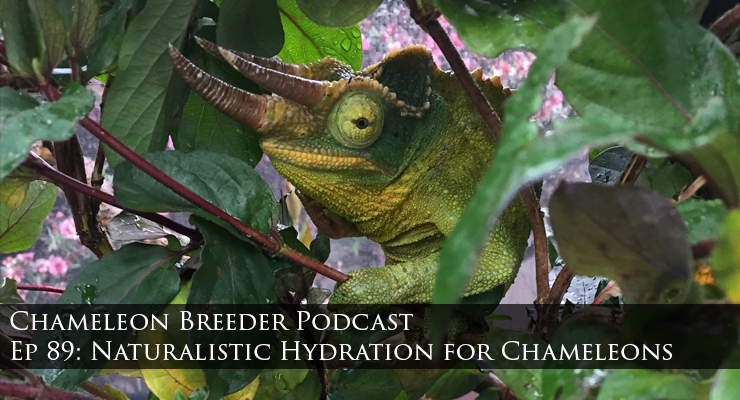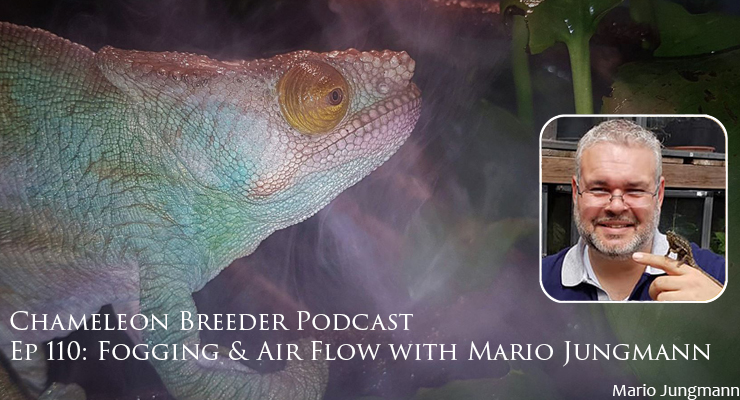The above cages show two properly set up chameleon cages. There is an open area for basking and hidden areas for resting and feeling safe. There is a heat and UVB gradient and the humidity ebbs and flows as it would in nature. Creating and maintaining a chameleon set up is challenging, but is both rewarding and educational!
One of the most important things we will do as chameleon keepers is set up our chameleon’s home. This is where our fantastical beast will need to find everything required for a happy chameleon life. Today we talk about how to set up a chameleon cage effectively and I introduce the 4+4 checklist to help simplify that process.
4+4 Checklist
The 4 + 4 Checklist is a way to structure an evaluation of a chameleon cage. This describes four representative branches to allow access to the four gradients. And this provides a good guideline when you want to make sure the important elements of a chameleon cage are there
The 4 Gradients
- Heat: A chameleon needs to keep their body within a certain temperature range for normal function. In the morning they warm up and then they move in and out of the sun and shade to maintain their comfort level temperature for movement, digestion, and body processes. Too much heat is deadly quickly. Too little heat over time degrades the immune system and leads to disease and disorder. Since we have no way of knowing what the chameleon needs at any given time we provide a range of temperatures within the maximum and minimum we know they work well in and we let them regulate their own temperature. That is the basis of the gradient approach. The chameleon decides.
- UVB: Within the ultraviolet wavelengths of sunlight there are certain frequencies that both our, and chameleon’s, bodies use to synthesize vitamin D3. In captive husbandry we have to make sure this wavelength is present at an acceptable level, accessible, and escapable. The UV Index at some of these chameleon’s natural habitats is very high, but they spend most of their day hiding from it. How much UVB we offer is a tricky subject and will differ by species. If chameleons bask in the morning and hide in the afternoon should we just give them the equivalent UVB they would find in the morning or do we give them the full amount and give them a dense hiding place to deal with that? This is an ongoing experiment. But, as far as a checklist item it is important as keepers often don’t know the characteristics of their lamp and the branches are not set up for getting into the proper illumination or out of intense UVB.
- Humidity: We are seeing more and more how replicating the natural humidity cycles helps chameleons function properly. This gradient ends up being over time rather than distance. The natural higher levels during the night and the ebb during the day has been shown to bring chameleons back to a hydration behavior more in tune with natural behavior.
- And finally, the gradient of Exposure. Chameleons will have differing comfort levels with regards to showing themselves to the world. Remember that chameleons are not only predators, but they are also prey. They must keep their eyes open for trouble all the time. In captivity they settle down tremendously and there is a good chance they will feel so secure that they end up sleeping in the open. Especially if they are captive bred and raised under your loving care. They may totally ignore what is in their DNA because it just doesn‘t relate to their life as a valued family member. But that healthy fear is deep inside and it may come up from time to time. Giving them a hiding place ensures that they have that choice. It is curious how like us they are. If they have it they may not ever use it, but if they lose the option to use it they miss it. And, of course, many chameleons do retain that fear of things larger than them.It is part of what they are and it is not an insult to your love for them. It is your love for them that makes you respect what they are, know they can’t just switch instincts to suddenly being a domesticated animal, and desirous of giving them what they need to feel secure. Their DNA doesn’t change just because you are a vet tech, animal behaviorist, reptile rescurer, or hermit crab whisperer. If you are so in tuned with animals you will be in tune with what chameleons truly are and not be lulled away by what you wish they would be.
The 4 Branches
- Security Branch: Does the chameleon have a place to feel safe to sleep and hide? This means a perching branch that allows the chameleon to get out of view of all of us humans. And you have to check from all sides that are accessible to humans or pets walking around. Check the security or “exposure” gradient.
- Basking Branch: Does the chameleon have a branch that allows effective and safe basking – meaning both UVB and heat. Verify that the UVB is sufficient and the basking temperature appropriate. Check to make sure that the heat and UVB gradients are set up so the size of the chameleon fits into the gradient that is set up.
- Eating Branch: Does the chameleon have proper access to food? This, of course, depends on the feeding habits the owner has put in place. It wouldn’t hurt to check into feeders and supplementation at this point.
- Drinking Branch: Does the chameleon have physical access to hydration? And, this, of course, is tied directly into the humidity gradient over time.
Cage Set-up Tricks
Dragon Ledges: These patented screen cage side anchors screw to the cage frame to provide a way to solidly attach horizontal branches and potted plants in a screen cage. When set up in a grid with two strong structural branches they can hold two to three 1 gallon potted plants. These are made by Dragon Strand, but are available as a retro fit kit for cages from other major manufacturers. Check out the link below for more information:
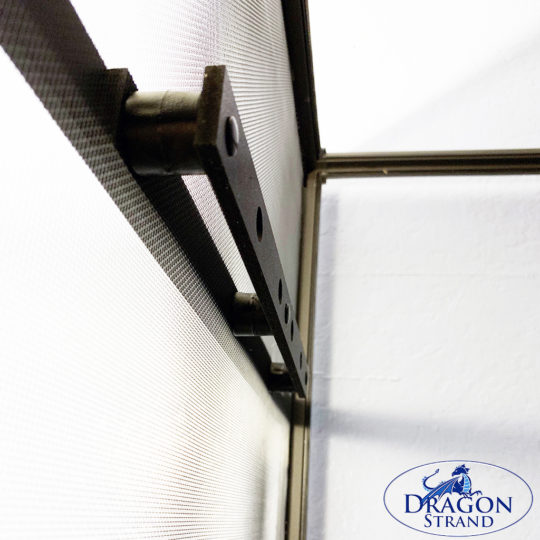
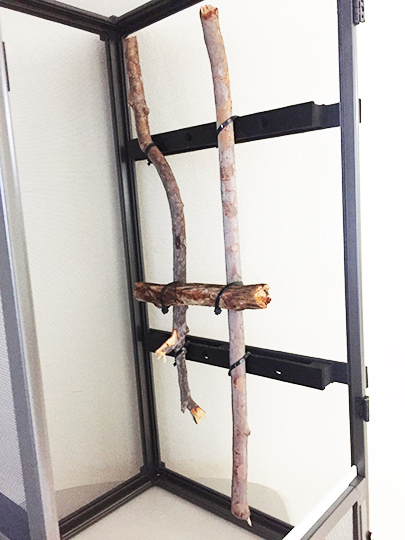
Grid Pattern: Using two vertical structure branches (about 1/2″ in diameter or more) and lashing them to the horizontal Dragon Ledges creates a strong grid which makes it easy to place horizontal perching branches and potted plants at any height in the cage.
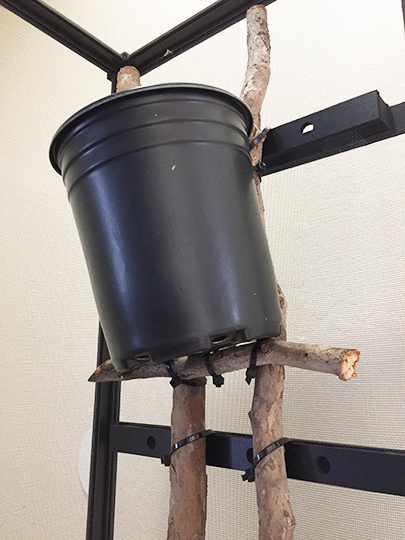
Cross bars for pots: Pots can be placed at any height. This is made very simple by just adding a crossbar to support the bottom of the pot.
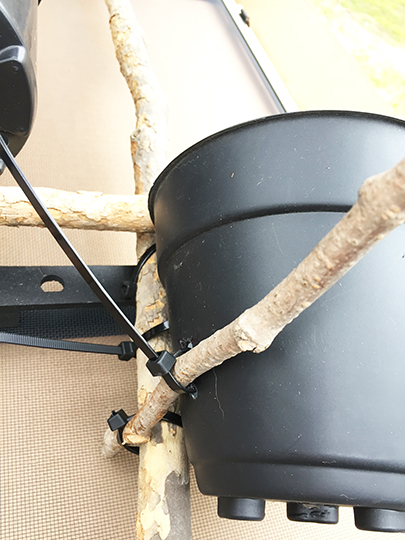
Pot-in-Pot Method: Mounting pots is easy when you use two identical pots. Use one for mounting and one for the plant. Once one is mounted the one with the plant can be slipped in and out if need be. This image shows how to lash the mounted pot to the structural branches.
Medium Tall Clearside Atrium Enclosure: In this episode I modeled the cage build off the Dragon Strand Medium Tall Clearside Atrium Enclosure. This is a 30″ wide x 23″ deep x 48″ tall cage that combines height and width. This is an ideal enclosure to use as it has clear sides for the back, right side, and front which gives me an area that I can mist without getting it on my walls and furniture, but also I can create a humidity pocket without the worry of stagnant air. This is because the full left side panel is screen and provides more than enough ventilation. The cage is actually sold as a system which includes five Dragon Ledges, a drainage tray with a screen floor that may be used in place of the plastic floor for maximum drainage, and two hydration mounts which can accommodate Mist King and Cli-Mist nozzles or 1/4″ input which can accommodate Exo-Terra Monsoon mister input.
You can check out the cage product page here:
https://dragonstrand.com/product/medium-tall-clearside-system/
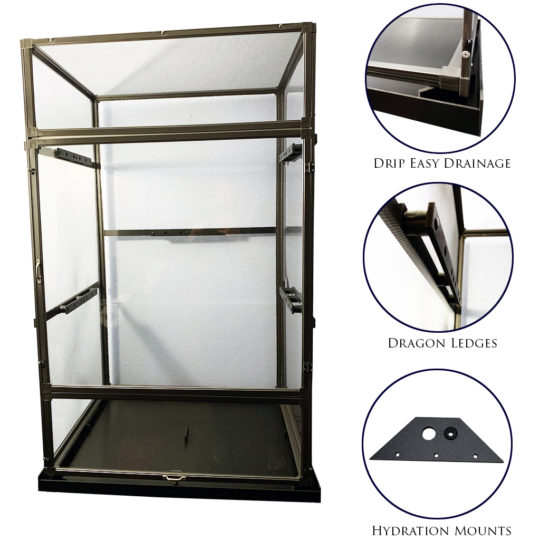
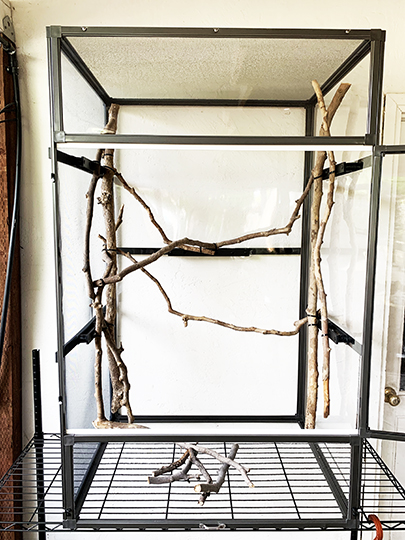
This image shows a network of structural branches in a Medium Tall Clearside Atrium cage.
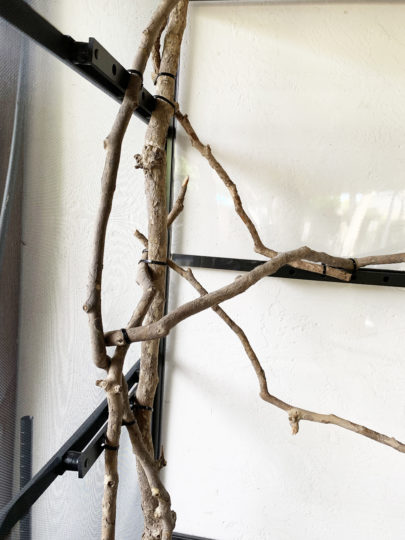
A close-up of the left side. Although the basic foundation to create a grid is two vertical branches, there is no reason why you shouldn’t allow the natural flow of the branches create a natural feel to the structural branches.
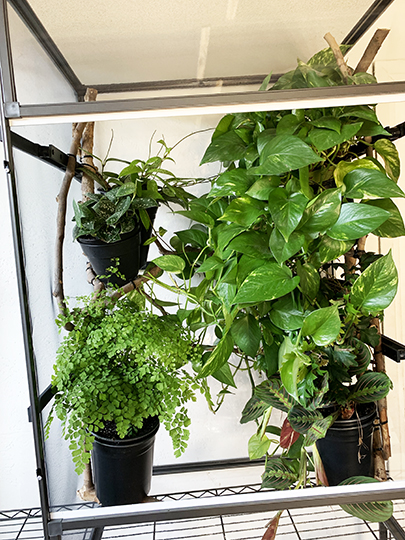
Once the plants are installed I can fill in the rest of the perching branches and network branches.
